Interview with Dr James Sterrett, US Army Command and General Staff College
Dr Sterrett is the Deputy Director of the US Army Command and General Staff College’s Digital Leader Development Center’s Simulations & Exercises Division. Yes, that’s a loooooooong title. The short version is: he uses wargames for training, and gets paid for it. He’s also an avid hobby wargamer, and has spent about 7 years struggling to come to grips with the differences between “games” and “simulations” (pretty much since I introduced him to “Brant’s Theory of the Differences Between Games and Simulations”). In spite of this, he agreed to have a chat with us about his role at Ft Leavenworth.
Interview by Brant Guillory, 5 October 2013
Can you please give us an overview of the Digital Leader Development Center’s Simulations & Exercises Division, and what role they fill at the Command and General Staff College (CGSC)?
The Digital Leader Development Center (DLDC) supports CGSC’s exercises. DLDC has three major functions: providing and supporting Army and Joint mission command systems; providing and supporting simulations and exercise planning; and providing an exercise network for the simulations and the command systems.
Thus, Simulations & Exercises Division’s foremost job is exactly what it says on the label: put on the exercises the instructors want: selecting the best simulation for the job, ensuring it is ready to deploy into classrooms, preparing support materials, building scenarios, training student and faculty operators, and providing technical support. In addition, we teach the electives on training with simulations, exercise design, and exercise management; and we conduct R&D to find new simulations to meet the faculty’s needs. Sometimes we build them; we’ve got a very simple board game in testing at the moment, intended to help with classes in planning.
What sort of wargaming backgrounds do your team bring to the table, and how does that help them with their day-to-day jobs?
We’re all gamers. The Euler diagram of the overlap of our gaming hobby interests is pretty complex, and there are very few places where all of us overlap – but there are two keys ones. First, each of us brings some passion for the use of simulations in training and education. Second, all of us enjoy putting on games for other people: things such as building scenarios, designing and testing systems, or creating support materials – exactly the kinds of work we need done.
What’s a “week in the life” of preparing for a big wargaming event (say, a warfighter exercise) look like on the DLDC team? What about a “day in the life” of the actual exercise?
We don’t run anything as big as a warfighter; our biggest exercises are the division exercises. One of these is run for every section of 64 students, and they are run in two big batches: typically 5 or 6 in September, and 16-18 in February. The students use their own classrooms for the exercise. We teach 1 or 2 students from each section to be the technical lead for their section’s exercise. Those students then teach their fellow students how to operate the simulation – in this case, Decisive Action – and are the leads of the Tech Cell during the exercise, while we in Simulations are the on-call tech support.
One of the two Tech Cell students is usually an FA57 officer; Functional Area 57 is Simulation Operations, and one of their primary jobs in the Army is running exercises. Being the Tech Lead is a good experience for them and an opportunity to demonstrate to their peers what it is FA57s do. We usually call the non-FA57s “Temporary FA57s” for the exercise and thus refer to the whole group as FA57s, even though some of them are actually in other branches.
The train up for the FA57s begins about 8 weeks before the exercise. They get 16 hours of instruction and practical exercises from us, plus homework working with the simulation, plus homework preparing and organizing parts of the exercise. Combined with the extra time and work they put in during the exercise, they earn an elective credit.
As well as teaching those classes, we’re working on making sure the scenario is polished and ready to go in accordance with the instructors’ desires; testing any last-minute changes made to the software to ensure everything works; and we’re on-call for support as the students start to get their heads around the simulation.
The first week of the exercise is the “prep week”. Most of the students in each section are busily working on their division operations order. The students assigned as simulation operators (typically about 10 of the 64) are trying to learn the simulation, and their role in it, and receiving orders for the unit they will command, preparing their own plans and orders, and back briefing the division staff. As this week continues, the volume of support calls rises.
The morning first day of week is the MiniEx. Each section runs 3 turns (6 scale hours) in the simulation as if it’s the real thing. If all goes well, both technically and in terms of having events move where the instructors need them to, then the results are kept. If there are technical problems, they get solved or worked around; and if the instructors don’t find the outcome of the MiniEx useful, its results are simply thrown away. The exercise execution typically kicks off on Tuesday, and runs until Thursday or Friday, by which point everybody is exhausted. Our support call load in Sims usually peaks on the MiniEx day.
A “day in the life” during an exercise usually begins with us sitting at our desks, waiting for students to contact us with questions. In theory, all the questions should be coming from the FA57s, who are the front line tech support. That means any questions that get to us fall into two categories: “How Do I?”, answered by teaching a technique or workaround; and “It’s Broken!”, which can get exciting when it’s an issue we haven’t seen before and we have to figure out both the problem, and also how to keep the exercise moving, as fast as possible.
We’ve also learned to send people out to visit all the exercises, popping into each one to see how things are going. This gives us a chance to fix a lot of minor issues and questions before they snowball into bigger problems.
What sorts of insights are the participants in your exercises expected to take away from the event? What are some of the other “unintentional” lessons that they tend to absorb along the way?
Students are expected to come away with a better understanding of how a division staff functions in combat, so that they can go out and be a useful member of a major unit’s staff. The unexpected lessons are as varied as the students and their plans in the exercises. Among the items that instructors commonly mention students learning are the sheer size and footprint of a division, not just during combat but also on the march; the sheer complexity of trying to orchestrate all of its actions and capabilities into a coherent whole; and the difficulty of clearly conveying the plan for that orchestration across an organization. Causing 20,000 people to suddenly move in the same direction for several days, while keeping them fed and watered, is difficult. The challenge gets harder when another large group of people is trying to move in the other direction, at the same time, and harder still when you’re each trying to inflict the maximum chaos and death on the other.
Tell us a bit about the FA 57 career field and the program you have for developing those officers? What are they expected to learn in their program at CGSC and how are they expected to apply it to their follow-on assignments in the Army?
Functional Area 57 (FA57) is the Army’s Simulation Operations branch, though in fact FA57s are triple-hatted: they manage the use of simulations to provide simulated data to commanders and staffs during training; they manage mission command systems in order to help present real information to commanders and staffs when deployed; and they are the Army’s Knowledge Managers, responsible for organizing information so it is useful. FA57s are expected to have both knowledge of the operational army, and also knowledge of computers, simulations, and battle command systems: they are expected to be able to translate between geeks and grunts in order to ensure that technical requirements and deliveries actually meet the needs of the field.
DLDC Simulations deals only with the first of those three hats. We prepare the FA57s to be the tech lead in their exercises. In addition, we teach three classes for them. The first looks at training with simulations. Students try out a number of different commercial games, which form the basis for discussion of what they can – and cannot! – be used to teach, and, more widely, what a similar game or simulation could or could not be used to do. By the end of that course, students are expected to be able to explain clearly why a given simulation is best suited to a given training task, including shortfalls and necessary workaround. The second and third courses form a pair, following on to the first, which studies exercise design, exercise management, and enough of a grounding in computers to know when if a technician is talking sense or not.
FA57s could wind up in a wide range of assignments. There are FA57 officers in brigade and higher units headquarters, often wearing all three hats in one job. There are FA57s at places such as the National Simulation Center, managing major Army simulation programs. There are FA57s at the various Training Centers, helping manage exercises and simulation support. There are FA57s at some schoolhouses as well – my boss, LTC Lance Headrick, is an FA57.
The Army has a reputation for developing hugely-sophisticated training ‘games’ that require significant time to set up and operate. What is it about the Army’s need for this level of sophistication that isn’t met by detailed off-the-shelf games from the commercial world?
Off the shelf games are generally built for one person to play on each side, and include a reasonable layer of abstraction somewhere in order to keep the game manageable. Even Gary Grigsby’s most intricate games didn’t expect you to maneuver each squad on the Eastern Front!
The Army’s big simulations are expected to interface with units in the field at places such as the National Training Center. As a result, even a corps-level simulation will have to take in information on individual soldiers and vehicles. This is the first reason they the Army sims often get so complex.
The second reason is that many of these simulations are used to answer two very different kinds of questions. In training, the simulation is helping answer the question, “Can the training audience do this job correctly?” In principle, you can throw out a lot of detail in such a simulation if it isn’t relevant to the specific training audience – but the Army often cannot, because the simulation has to work with live units in the field, as explained above. However, these simulations also are asked to answer predictive questions about the future: “How will this system/plan/organization change work out?” Predictive analysis requires a great deal more care, and usually a great deal more detail, because the simulation is providing you with an answer that you want to be able to prove is correct before you risk real people’s lives on it.
Schoolhouses run into trouble using these big simulations, because we haven’t got an entire unit to work with, and we have to run a great many exercises in parallel. As a result, we are much more likely to use much simpler simulations that can be operated by students and are just realistic enough to teach the students what they need to learn.
We keep hearing about the “human terrain” as a factor in future operations. How are the Army’s sims and exercises evolving to include these factors, and how are your team integrating them into exercises?
It’s a challenge! A number of projects have been tried over the years to do this. The wider Army uses JNEMS (Joint Non-Kinetic Effects Model), which is a high-powered model that requires a much larger simulation to work with it. The simulation we’re using in classrooms at CGSC now is UrbanSim , in which the student commands a battalion in a fictional area of Iraq or Afghanistan. UrbanSim works as a single-player simulation the student can play through in around two hours, and has proven popular with both instructors and students.
At other times, however, the human terrain is covered by “injects” – information that the instructors put into the exercise directly, not through the simulation. A good inject should cause the students to make a decision, and they are usually part of a thread, chained in a manner similar to a Chose Your Own Adventure, with good outcomes or bad outcomes depending on what the students do or don’t do about the injects as they come in. Injects can cover any desired topic or theme, and the overhead of handling each inject is relatively low. However, managing a lot of them – not to mention writing a lot of them! – is a lot of work. You could see simulations as inject engines that don’t require somebody to come up with all the potential events beforehand.
What’s something that hobby game designers could integrate into their designs that might more accurately reflect the processes and operations that the Army use? Similarly, what’s the one ‘great idea’ that the hobby game designers have that the Army should be putting in their toolbox?
If we ignore the higher stakes in Army training, hobby games normally lack, in order of increasing rarity: team play, chains of command, and staff positions. An army isn’t composed of one person and a bunch of robots that immediately and automatically do everything that person commands. They are huge teams trying to function in a chaotic environment. Chains of command exist because there is too much going on for any one person to manage the entire situation at once. Staff officers exist in order to help manage the information flow when an organization’s span of control is so large that it takes multiple people to try to figure out what is going on and what needs to be done. Games that create teams of staff officers can be fun; some of us from the Simulations Division, assisted by various other volunteers, have periodically run these events at game conventions, and people seems to have fun as they struggle with the unfamiliar puzzle[1].
What the Army’s simulations often lack is a model of morale. Everybody agrees morale is a very real component of warfare. However, it is tricky to pin down exactly how it should be quantified and what effects it should have, and there is no officially approved model to fall back on, so it tends to get left out. Is this good for training? Better people than me have argued both ways. I fall back to a standard question: What are the participants supposed to learn? Many of the Army’s exercises are focused on getting process right, because achieving a good staff and planning process is a challenge all by itself, and in such exercises the outcomes on the battlefield don’t necessarily need to be perfect as long as they are plausible.
How does one stumble into a career of playing wargames – and teaching about wargames – on a government paycheck? It can’t purely be luck, can it?
Fortune favors the prepared! However, when the preparation wasn’t aimed at a given goal, the good outcome cannot really be called a product of planning. Three of us (including me) got word of job openings on the team through the TacOps list, back when CGSC used TacOps in its exercises. In my case, a military history PhD, teaching experience, beta testing, and game reviewing all probably helped as well, but getting this job wasn’t part of the plan when I did any of those. One of our team was a National Guard FA57 before we hired him, and that’s probably the closest you’ll find to a planned entry.
What should we have asked you that we forgot to ask you?
“How and why do you choose the simulations you use in your exercises?”
We call the process we use PDI, for Purpose, Decisions, Interactions.
- Purpose: What does the instructor want the students to learn?
- Decisions: What decisions and dilemmas must the students face, in order to help them learn?
- Interactions: What must the simulation do to present situations to the students, take in their decisions, and present an outcome of those decisions?
The simulation doesn’t come into view until the Interactions stage. Before then, we’re trying to define the requirement: what does it have to support? Once we know what needs to happen, we can start working out what the simulation has to do – and, equally important, we can define what it doesn’t need to do. Then we can look for a simulation that fits the requirement. Equally, when we look at new simulations, we’re thinking through PDI in reverse: looking at what interactions is has, and what decisions and dilemmas it creates, to figure out what purposes it might serve.
If the simulations is to be used for 60-90 minutes, in a classroom, and students must be able to learn the simulation in 5-10 minutes, we know it cannot be very detailed, because the students won’t have the time to figure out what the detail means and still make a useful number of decisions. As a result, the simulation has to present the essentials of the dilemma, but not a lot of detail. As a result, you get simulations such as UrbanSim, used to drive discussion on Stability Operations; or Future Force, used to drive discussion of Force Management. (You can buy Future Force from HPS Simulations. You won’t get our scenario, but it’s otherwise the same. UrbanSim is not available commercially.)
If the simulation is going to drive a small[2] staff exercise in which 64 students will plan and fight for 8 days of class time in order to learn how to function on a division staff, then the level of detail should rise. The students have more time to figure out what the increased detail means, there are more people to work on the problem – and much of the point is to learn how to work on the details! However, some of those students are going to be simulation operators, and their trainup time is only going to be a handful of hours, so the simulation design still has to carefully limit the level of detail to what’s important to the key decisions the students need to make. We have developed Decisive Action over time (it began as an instructor’s project at CGSC, and LTC (ret) Jim Lunsford has continued to develop it afterwards). You can get an earlier version of Decisive Action from HPS Simulations (the newer version mostly adds more detail to logistics.)
[1] Write-ups of some of these events: http://grognews.blogspot.com/2011/06/origins-staff-wargaming-lessons-learned.html and http://www.wargamer.com/article/2901/event-coverage-origins-2010-day-1
[2] Yes, it’s small compared to what the Army normally does outside the schoolhouse!


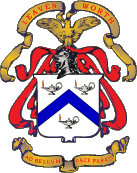
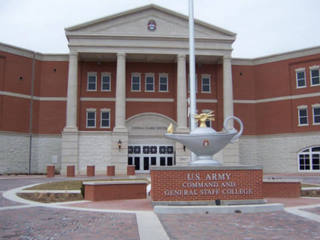
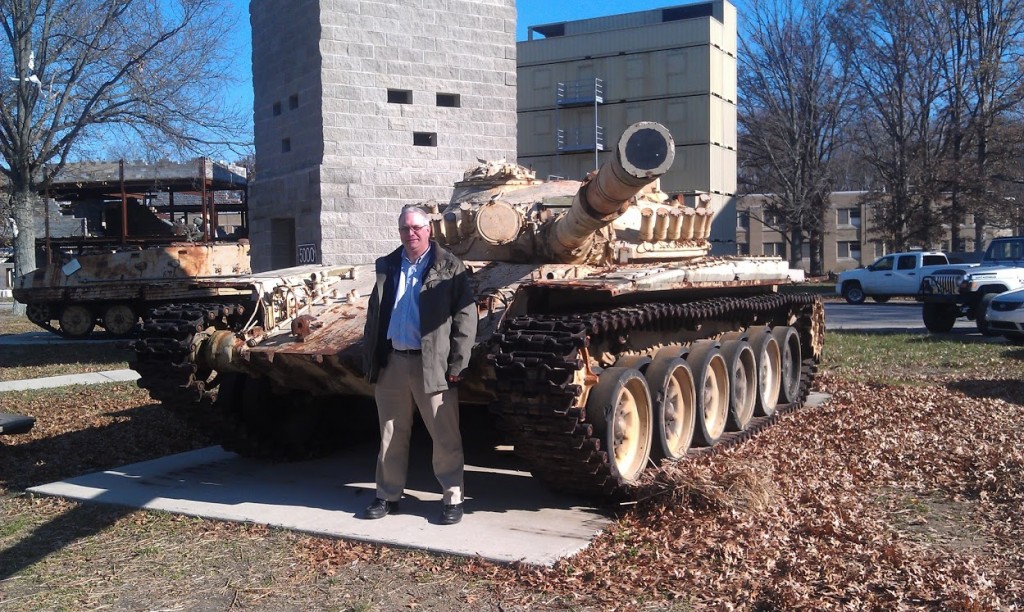
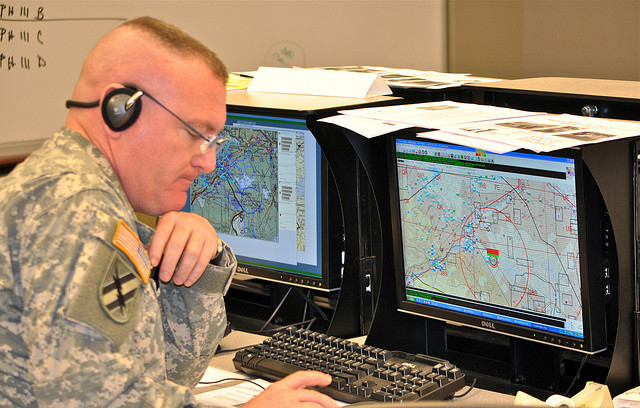
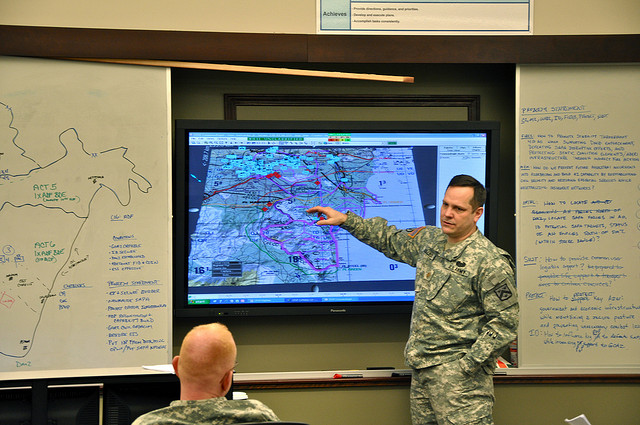

Smart enough to earn a slot at GCSC… still puts hand in pockets of his uniform. :sigh:
Maybe it’s because you put your hands in your uniform pockets for reasons other than retrieving items placed there?
Intresting interview, thank you!
Can i translate it on Russian (with link to your web) and post on our wargame web? (http://stratagema-magazine.ru/)
[…] Полное интервью на английском: http://grogheads.com/?p=2722 […]
[…] James Sterrett, Second Assistant Director for Stunts, The Muppet Movie […]
[…] a note, Dr Sterrett has stopped by GH twice before, discussing his day job here, and the Command Post Wargaming program at Origins […]
[…] James Sterrett, Reigning Kansas State Cliff-Diving Champion […]